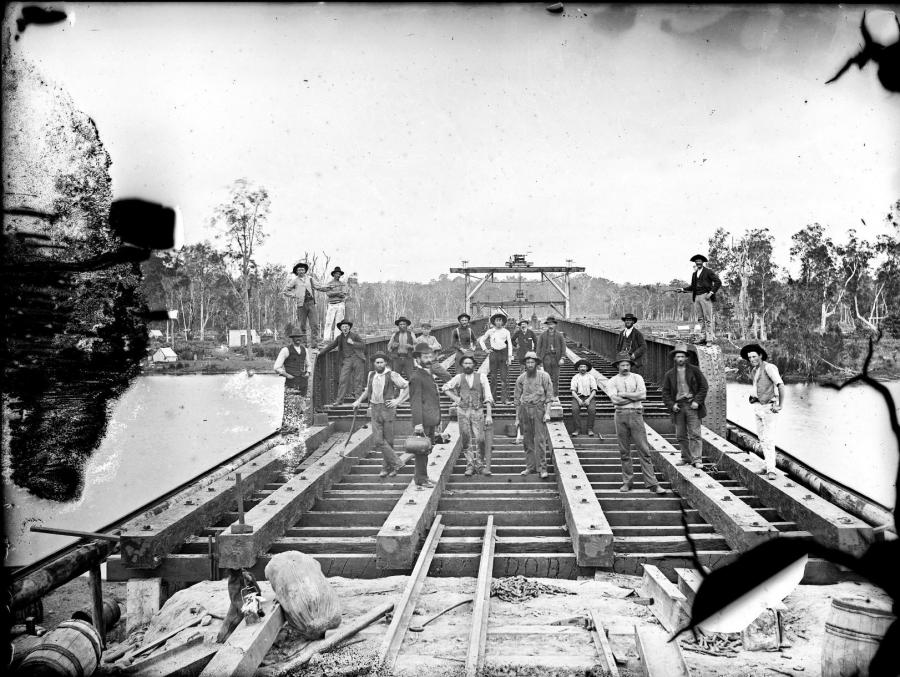
Authors: Dr Sue Rosen, Dr Sid French
Client: Transport Roads and Maritime Services Heritage
Our team enjoyed preparing this Heritage Assessment to assist in the assessment of strategic options for the maintenance and/or replacement proposed for the Dora Creek road bridge.
The investigation, which included a site visit as well as research in various local, state and national archives and libraries, found that this bridge is a rare surviving example of a rail bridge from the 1880s period when the first wave of expansion of rail lines across New South Wales was underway. Whilst not of the longest or largest range of such structures, it is representative of wrought iron plate web girder bridges constructed in that period, particularly for rail use.
With the construction of a new rail line, locals gathered at a public meeting, to ascertain views regarding a traffic bridge across Dora Creek. The proposed height of the rail bridge of 20ft was considered to be inadequate by locals, while a more favourable road bridge would bring a commercial advantage to the area. In 1887, the bridge was opened to rail-only traffic on one line only. It was not until July 1910 that the line was duplicated. Local road traffic continued to be impeded by the lack of a road bridge.
The campaign for a road and foot bridge continued into the early 1950s, but was repeatedly declined as government departments had other expenditure priorities. It was not until the completion of the new rail bridge in 1958 that the conversion of the old rail bridge to a road bridge was achieved.